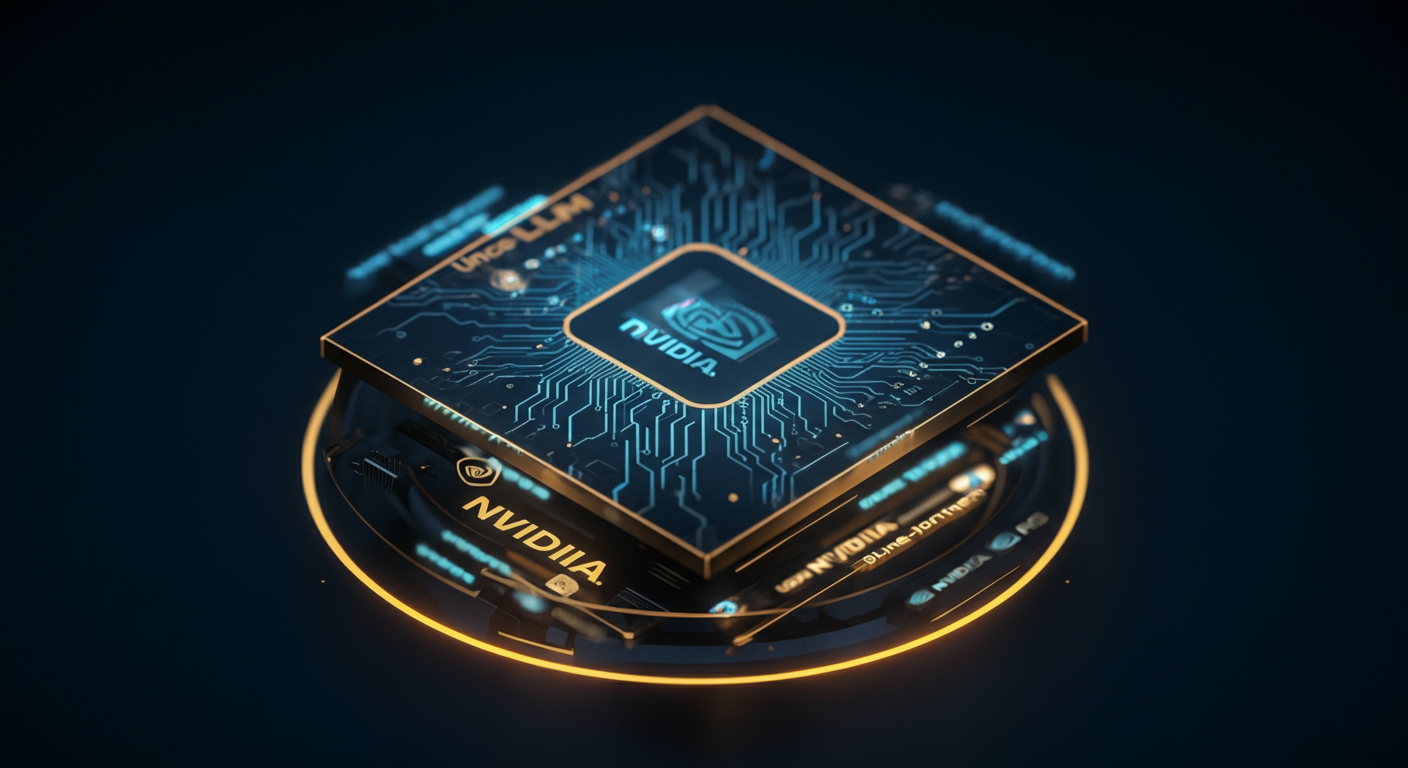Seamless MATLAB Integration: Unleashing Octave Power in Your Python Code

Here's how to seamlessly blend the worlds of MATLAB and Python, and why you might want to.
Introduction: Bridging the Gap Between MATLAB and Python
The need for scientific computing tools to "play nice" together is no longer a luxury, but a necessity in today's collaborative research environments.
Why the Shift?
MATLAB has long been a stalwart in scientific computing, but more and more, its users are drawn to Python for its:
- Versatility: Python's ecosystem stretches far beyond numerical computation.
- Extensive Libraries: From data analytics with Pandas to machine learning with Scikit-learn, Python's library landscape is unmatched. These Python AI tools offer a wide variety of features from data collection to deployment.
Meet Octave
Enter GNU Octave, a high-level interpreted language, primarily intended for numerical computations. It provides capabilities for the numerical solution of linear and nonlinear problems, and for performing other numerical experiments. Think of Octave as a powerful, open-source (GPL licensed!), near-identical twin of MATLAB, without the hefty licensing fees. Octave is an AI web scraping tool that allows you to extract data from websites.
oct2py: Your Rosetta Stone
The magic happens with oct2py, a Python package that allows you to seamlessly call Octave functions and scripts directly from your Python code.
- You can pass data back and forth effortlessly
- Run complex simulations
- Leverage existing Octave codebases without rewriting them
What You'll Achieve
By the end of this tutorial, you'll be able to:
- Run Octave code directly within your Python scripts.
- Understand the licensing differences (proprietary MATLAB vs. GPL Octave).
- Have the fundamentals to explore more complex integrations.
Here's how to make Octave and Python sing in perfect harmony.
Setting Up Your Environment: Installing Octave and the oct2py Library
Before unleashing the power of Octave within your Python scripts, we need to get our environment squared away – think of it as tuning our instruments before a performance.
Installing Octave
First, let’s get Octave installed; consider it the core engine of our operation. The installation process varies depending on your operating system:
- Windows: Download the installer from the Octave website and follow the on-screen prompts. Make sure to add Octave to your system's PATH.
- macOS: The easiest way is using Homebrew:
brew install octave. If you don't have Homebrew, get it first! - Linux: Use your distribution's package manager (e.g.,
apt-get install octaveon Debian/Ubuntu,yum install octaveon Fedora/CentOS).
octave. You should see the Octave prompt. If not, double-check that Octave is in your system's PATH.Installing the oct2py Library
Now, let's install oct2py, the magic glue that allows Python to communicate with Octave. Think of it like a translator:
- Open your terminal or command prompt.
- Use
pipto install the library:pip install oct2py.
pip install --upgrade pip).Virtual Environments (Recommended)
To keep your project dependencies isolated, create a virtual environment. This is generally considered best practice for Software Developer Tools:
-
python -m venv .venv - Activate the environment:
- Windows:
.\.venv\Scripts\activate - macOS/Linux:
source .venv/bin/activate
oct2py within the virtual environment.Testing Your Installation
Finally, let's test if everything works. Create a Python script (test.py) with the following:
python
from oct2py import Oct2Py
oc = Oct2Py()
output = oc.eval('disp("Hello from Octave!")')
print(output)
Running python test.py should print "Hello from Octave!" to your console. If it does, congratulations - you're ready to start integrating Octave with Python.
In essence, by carefully setting up our environment, we've established a solid foundation for our Octave-Python symphony. Now, let the coding commence!
Sure thing! Let's dive into the magic of seamless MATLAB integration.
Core Functionality: Executing Octave Code Directly from Python
Think of oct2py as your Rosetta Stone, translating between Python's elegance and Octave's numerical prowess. This tool facilitates interaction between Python and Octave, allowing you to harness Octave's capabilities directly from your Python scripts. Here's how you can unlock this potential:
Basic Usage: Expressions and Evaluation
First, let's evaluate simple Octave expressions:
python
from oct2py import Oct2Py
oc = Oct2Py()
result = oc.eval('2 + 2')
print(result) # Output: 4.0
It's as easy as that! Just like having a mini-Octave session embedded within your Python code.
Data Transfer: Variables and Types
Passing data between Python and Octave is crucial for more complex tasks.oct2py handles the conversion of variable types automatically:
- Integers and Floats: Just assign them.
- Strings: No fuss, they go right in.
- Matrices and Arrays: This is where the real power lies.
Efficient Data: Arrays and Matrices
Working with matrices?oct2py uses efficient data transfer methods:python
import numpy as np
from oct2py import Oct2Py
oc = Oct2Py()
matrix = np.array([[1, 2], [3, 4]])
oc.push('matrix', matrix)
result = oc.eval('matrix * 2')
print(result)
Calling Functions & Retrieving Results
Octave functions can be called directly from Python:python
from oct2py import Oct2Py
oc = Oct2Py()
oc.eval('function y = my_function(x); y = x^2; endfunction')
result = oc.my_function(5)
print(result) # Output: 25.0
Managing Output: Stdout and Stderr
Capture Octave's output within your Python environment:python
from oct2py import Oct2Py
oc = Oct2Py()
output, errors = oc.eval('disp("Hello from Octave!");', capture_output=True)
print(output)
print(errors)
Advanced Features: Inline Code & Scripts
- Inline Execution: Evaluate code snippets directly.
- Script Loading: Execute entire Octave scripts.
Performance Considerations: Minimizing Overhead
To maximize speed, minimize data transfers and optimize your code for efficient data handling between the two environments. Consider using tools like Code Assistance to optimize code.
In essence, oct2py bridges the gap, allowing you to use the strengths of both Python and Octave within a single workflow.
Here's how to turbocharge your Python scripts with Octave's mathematical prowess.
Advanced Techniques: Interacting with Octave Functions and Scripts
Sometimes, Python alone just doesn't cut it when you need serious numerical computation. That’s where Octave comes in – a high-level language, primarily intended for numerical computations. Did you know you can seamlessly integrate Octave code into your Python workflows? Let's dive in.
Defining and Calling Octave Functions
You can define functions directly within your Python script using the octave object.
Example: Defining a simple Octave function to calculate the area of a circle and calling it from Python.
python
octave.eval("function y = circle_area(r) y = pi * r^2; endfunction")
radius = 5
area = octave.circle_area(radius)
print(f"The area of a circle with radius {radius} is {area}")
Loading and Executing Octave Scripts (.m files)
Got existing Octave scripts? No problem! You can load and execute .m files directly. Imagine calling complex signal processing algorithms written in Octave from your Python-based data analysis pipeline!
- First, create an Octave script (e.g.,
my_script.m). - Then, execute it using
octave.source("my_script.m").
Handling Complex Data Structures
Passing data is critical, including structs and cell arrays. Octave structures can be passed seamlessly:
| Python Data Type | Octave Equivalent |
|---|---|
| Dictionary | Struct |
| List | Cell Array |
For instance, you can send a Python dictionary as an Octave struct for advanced data analysis:
python
my_data = {'name': 'Project Alpha', 'values': [1, 2, 3]}
octave.push('data_struct', my_data) # Push the python dictionary
octave.eval("disp(data_struct.name)") # Access structure field in Octave
Remember to check out a tool like The Prompt Index to ensure you're creating effective and accurate prompts for your coding work.
Okay, let’s dive into the electrifying world where Python's versatility meets Octave's numerical prowess, seamlessly integrated.
Practical Applications: Real-World Examples and Use Cases
Harnessing the combined might of Python and Octave creates solutions for diverse applications.
Signal Processing
Imagine analyzing audio signals in Python, leveraging Octave's powerful signal processing toolbox for intricate filtering or spectral analysis. A code snippet might look like this (conceptually):python
Python code
import oct2py
oc = oct2py.Oct2Py()
oc.addpath('/path/to/octave/signal/processing/toolbox')
filtered_signal = oc.filter_signal(audio_data, filter_parameters)
Octave's specialized algorithms enrich Python's general-purpose signal processing capabilities.
Image Processing
Using Octave's image processing functions can augment Python-based image analysis tasks. For instance, complex image enhancement techniques could be applied using Octave's functions, then returned to Python for further analysis.Combining Python's ecosystem of libraries with Octave's mathematical and numerical functions enables solutions that are more robust and efficient.
Numerical Simulations
Integrate Octave-based simulation models into a Python workflow. This is particularly useful in scientific research where Octave is used for designing experiments using Scientific Research AI Tools. You can use Python to control and analyze simulation results generated by Octave.Machine Learning
Combining Python's machine learning libraries (like scikit-learn or TensorFlow) with Octave's numerical capabilities offers enhanced model development. For example, prototyping a novel optimization algorithm in Octave and then deploying it within a Python-based machine learning pipeline.Control Systems

Use Octave's control systems toolbox for designing and analyzing control systems within a broader Python environment.
- Financial Modeling: Implement financial models using Octave within a Python environment. This is particularly useful for complex derivative pricing models.
- Real-World Examples: Code snippets demonstrate the seamless integration, showcasing the power of combining tools.
- Code Generation: Find the best Code Assistance AI Tools to improve your code generation productivity.
Navigating the integration of MATLAB's Octave within Python isn't always smooth sailing; anticipate a few ripples, but fear not, we'll iron them out.
Common Error Culprits
When using oct2py, you might stumble upon errors. Here's how to troubleshoot some usual suspects:
- Octave Not Found: This is the "Oh, no!" moment when
oct2pycan't locate your Octave installation. Solution? Specify the Octave path directly.
oct2py.oc.path = 'your/octave/path'.
- Data Type Mismatches: Octave and Python speak slightly different languages when it comes to data. A Python list might not directly translate to an Octave matrix.
- Dependency Issues: Python packages and Octave functions sometimes demand specific versions.
Debugging Like a Pro
Debugging isn't a dark art; it's methodical deduction.
- Verbose Mode: Crank up the verbosity.
oct2pyoften provides helpful clues in its output.
oc = oct2py.Oct2Py(logger_level=logging.DEBUG) for detailed logs that can spotlight the issue.
- Minimal Reproducible Example: Strip your code down to the bare essentials. Isolate the problematic interaction between Python and Octave.
- Check Error Messages: Pay close attention to both Python and Octave error messages. They're your Rosetta Stone. And, while you are at it, perhaps you could use some Code Assistance. Code assistants are very handy in such cases.
Best Practices for Robust Code
Write code that's not just functional but also resilient.
- Explicit Data Conversion: Manually convert data types where necessary to avoid implicit conversion errors.
- Version Control: Pin your Python and Octave versions to ensure consistent behavior across environments. Tools like checklist generator can help you check this.
- Sanitize Inputs: Protect against security vulnerabilities by validating all data passed to Octave.
Optimizing Performance
Speed matters. Minimize data transfer overhead by:
- Vectorizing Operations: Let Octave's matrix math capabilities do the heavy lifting instead of iteratively transferring data.
- Chunking Data: Break large datasets into smaller pieces for transfer.
- Choosing Efficient Data Types: Use data types that minimize conversion overhead.
Alright, let's dive into alternative integration methods that go beyond just the surface.
Beyond the Basics: Exploring Alternative Integration Methods
While oct2py provides a straightforward approach for integrating Python and MATLAB/Octave, it's wise to peek under the hood at other options. Think of it like having multiple routes to the same destination; some are scenic backroads, while others are high-speed freeways.
Other Approaches
- MATLAB Engine API for Python: MathWorks offers a dedicated API, letting Python code directly call MATLAB functions. It's like having a direct line to MATLAB headquarters.
- Comparison:
| Feature | oct2py | MATLAB Engine API |
|---|---|---|
| License | Open Source | Proprietary |
| Ease of Use | Generally simpler for basic tasks | More complex |
| MATLAB Required? | Requires Octave (free alternative) | Yes |
When to Use oct2py?
oct2py shines in scenarios emphasizing simplicity and where a MATLAB license isn't accessible. It's especially useful for projects leveraging Octave, the open-source sibling of MATLAB.
- Simplicity: Quickly bridge Python with Octave for simple tasks.
- Open Source: No license restrictions.
- Ease of Use: Its intuitive interface facilitates rapid prototyping.
Limitations and Workarounds

-
oct2pymight not handle very complex data structures or large datasets as efficiently as the MATLAB Engine API. - Workarounds involve careful data serialization and function design.
To summarize, oct2py is a fantastic tool for straightforward Python/Octave integration, but consider other options based on your project's complexity and licensing requirements. Now, let's explore some practical use cases...
Seamless integration isn't just a buzzword; it's the future of efficient computation.
Wrapping Up Octave and Python
We've seen howoct2py facilitates a potent alliance between Octave's numerical prowess and Python's versatile ecosystem, making complex tasks more manageable and unlocking new possibilities in scientific computing. By merging these languages, you gain:
- Enhanced productivity by leveraging each language's strengths.
- Improved problem-solving through access to a broader range of tools and algorithms.
- Simplified workflows that integrate seamlessly across diverse environments.
What's Next?
The future ofoct2py holds exciting potential, including enhanced error handling, broader data type support, and tighter integration with other Python libraries.It's time to get your hands dirty. Dive into the official oct2py documentation and the extensive resources available for Octave documentation and Python documentation. You can also find other Code Assistance tools.
Conclusion: Embracing the Power of Combined Ecosystems
Integrating Octave with Python viaoct2py is more than just combining tools; it's about boosting productivity and problem-solving. Experiment, innovate, and discover the full potential of this dynamic duo, and remember to check out Best AI Tools for your next integration.
Keywords
oct2py, Python MATLAB integration, Octave Python, run MATLAB code in Python, execute Octave from Python, MATLAB alternative, scientific computing Python, numerical analysis Python, Python Octave bridge, interoperability MATLAB Python, open source MATLAB alternative, call Octave functions from Python, Python for scientific computing, MATLAB to Python conversion
Hashtags
#Python #Octave #MATLAB #ScientificComputing #DataScience
Recommended AI tools
ChatGPT
Conversational AI
AI research, productivity, and conversation—smarter thinking, deeper insights.
Sora
Video Generation
Create stunning, realistic videos and audio from text, images, or video—remix and collaborate with Sora, OpenAI’s advanced generative video app.
Google Gemini
Conversational AI
Your everyday Google AI assistant for creativity, research, and productivity
Perplexity
Search & Discovery
Clear answers from reliable sources, powered by AI.
DeepSeek
Conversational AI
Efficient open-weight AI models for advanced reasoning and research
Freepik AI Image Generator
Image Generation
Generate on-brand AI images from text, sketches, or photos—fast, realistic, and ready for commercial use.
About the Author

Written by
Dr. William Bobos
Dr. William Bobos (known as 'Dr. Bob') is a long-time AI expert focused on practical evaluations of AI tools and frameworks. He frequently tests new releases, reads academic papers, and tracks industry news to translate breakthroughs into real-world use. At Best AI Tools, he curates clear, actionable insights for builders, researchers, and decision-makers.
More from Dr.

